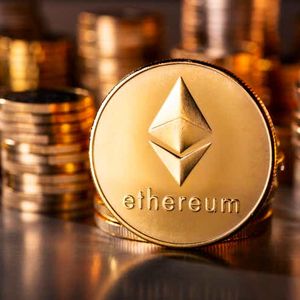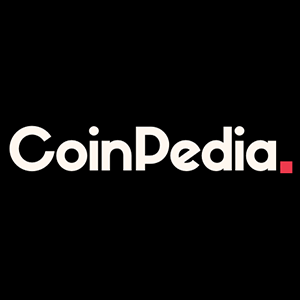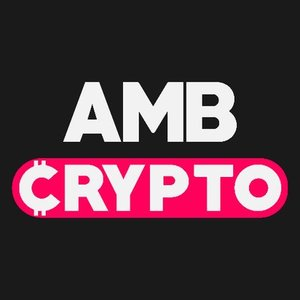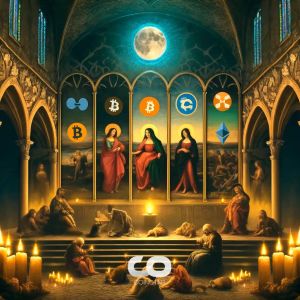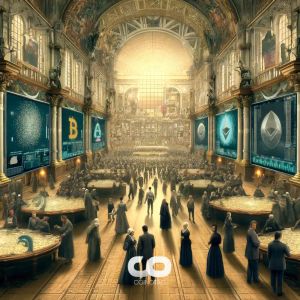Why I Am Betting On Ether After The SEC's ETFs Approval
Summary The SEC's recently approved Ether ETFs, soon to be tradeable, offer an easy way for investors to gain exposure to ETH. Should they take it? The Ethereum blockchain offers diverse applications such as Decentralized Finance, Gaming, Digital Art, and Gambling. Ether (ETH) acts as the fuel for these activities. Despite its potential, Ethereum's applications are still in their infancy. I also think Ethereum usage has somewhat stagnated in recent years when looking at on-chain data. I believe investing in ETH is suitable for risk-prone investors willing to hold for at least five years, while those uncomfortable with losing capital should avoid it. Understanding the crypto trilemma and Ethereum's approach to decentralization, security, and scalability is crucial for evaluating its investment potential. In this article, I describe the Ethereum ecosystem, its use cases and whether or not investors should consider exposure to Ether ( ETH-USD ), in my opinion. This is not a technical piece, but an article aimed at explaining Ethereum to non-technical but financially savvy folks. I invite readers interested in ETH to do their own due diligence and research further before taking a final decision on whether to invest. Thesis: Ether is digital oil for limited applications, but a high-risk investment worth considering One narrative about Ether (ETH, the native cryptocurrency of the Ethereum blockchain) is that it represents “digital oil”, as opposed to Bitcoin representing “digital gold”. I think this narrative has some limitations, but it is overall a good way to understand what Ethereum is in a nutshell. The Ethereum ecosystem today is the second-largest crypto platform (ETH is the second largest cryptocurrency by market cap, behind Bitcoin). Applications of the Ethereum platform range from Decentralized Finance to Gaming, Digital Art and Gambling. I will cover these in detail in the article. In this context, ETH is the “fuel” that allows these applications to take place on the Ethereum blockchain. Stretching the “digital oil” narrative, I’d say Ethereum is like oil you can only use for certain applications. You might power your lawn mower with it, but you won't be able to drive a truck. To be fair, some of the applications of Ethereum, and especially Decentralized Finance, have the potential to disrupt entire industries and be the basis of a new digital economy, often referred to as “Web3”. However, when simply looking at the scale of today’s Ethereum ecosystem there is no doubt in my mind that applications are still limited compared to “web 2.0”. In this current digital era, dominated by centralized apps and digital ecosystems, Ethereum's uses are simply not as widespread. Ethereum usage has also somewhat stagnated in the past couple of years when looking at on-chain data. I believe the key issue with Ethereum today from an investment perspective is that its applications - albeit truly fascinating - are still in their infancy. It remains to be seen whether or not, for example, traditional financial institutions can adopt Web3 - and to what extent. Recommending exposure to ETH depends on an investor’s risk appetite. Unlike Bitcoin, which I think is easier to understand as a potential global reserve asset, assessing the risks of investing in the Ethereum ecosystem is more challenging as it requires at least some degree of understanding of the technology. I believe a moderate exposure to ETH, as a new technology and a platform with great potential, is beneficial for risk-prone investors willing to put capital at risk and hold for at least five years. As a user of the Ethereum ecosystem, I would rather invest in ETH to gain exposure to blockchain as a technological trend, rather than blockchain thematic ETFs. That's why I have a position in Ether that is roughly 25% that of my Bitcoin position. Bitcoin is my single largest overall investment. However, Investors who are uncomfortable with losing their capital should refrain from investing in ETH, in my view. The (very) basics of the Ethereum blockchain Note: this section covers the very basics of Ethereum and the blockchain technology. If you are already familiar with cryptocurrencies, you might want to skip it and go to my next section, where I cover what I believe are the main applications of the Ethereum platform today. The first fundamental concept to understand is the difference between Ethereum and Ether. Ethereum is the blockchain platform that supports various applications (which I will cover in the next section). ETH is the native cryptocurrency of Ethereum, acting as the “fuel” needed to run the blockchain. Investing in ETH is often simplified as “investing in Ethereum”, but investing in Ethereum can take different forms. The most obvious one is indeed to buy the native cryptocurrency of Ethereum, which “powers” the entire ecosystem. But investing in Ethereum could also mean being actively involved within the many applications of the Ethereum ecosystem. In this article, I will discuss the merits (and risks) of investing in Ether. When referring to Ethereum as an ecosystem, I will interchangeably use words such as Ethereum “platform”, “ecosystem”, “network” or “blockchain”. Readers who are not familiar with cryptocurrencies might wonder what exactly blockchain is. The simplest way to think about blockchain, in my view, is as a decentralized database or a decentralized, very powerful computer. Unlike a traditional database hosted on one machine, the Ethereum blockchain is decentralized and “hosted” by the participants of the blockchain. Any operation (transaction) on the blockchain must be validated on the blockchain itself. For Ethereum, this is done using a “Proof-of-Stake” protocol. Proof-of-Stake involves validators who need to “stake” Ether. Staking Ether means locking it up for a period of time, allowing it to serve as a deposit or reward when transactions occur. In this sense, Ether is the “fuel” of Ethereum. To note, up until 2022 the Ethereum blockchain used a “Proof of Work'' protocol, similar to that of Bitcoin. In the past, instead of staking cryptocurrency, validators on the Ethereum blockchain needed to solve complex mathematical problems in order to validate a transaction. I will not expand on the reasons why the switch was made in this article, if not just by mentioning that participants in the ecosystems recognized it as a more energy efficient and scalable technology. I will cover these topics again later in the article, when discussing the “crypto trilemma”. What is the Ethereum platform for? Many articles discussing use cases for the Ethereum ecosystem can be found online. I believe most of them are rather confusing, because they tend to mix actual applications with technologies enabled by the Ethereum blockchain. Also, they sometimes mention futuristic applications that are just wishful thinking at the time of writing. I am a user of the Ethereum ecosystem myself, and below are what I personally see as the 4 main use cases for the platform today. Disclaimer : I have no affiliation whatsoever with any platform, project, or legal entity mentioned in this article. Any platforms mentioned are included solely for informational purposes and based on my personal knowledge of the Ethereum ecosystem. If you are interested in investing or exploring the Ethereum ecosystem, I highly recommend conducting your own research. None of my advice should be considered financial or legal advice. The first, and most important use case in my view, is Decentralized Finance (DeFi) . DeFi is an alternative financial system built on the blockchain that operates without financial intermediaries. DeFi allows users to conduct financial transactions like lending, borrowing, trading and earning interest through smart contracts (contracts that self-execute on the blockchain) and decentralized platforms. In my view, DeFi projects today are mostly within the crypto world itself. In other terms, I have seen very few applications of DeFi that go beyond lending, borrowing or earning cryptocurrencies. Examples of well established DeFi projects include: MakerDAO, a decentralized organization that allows users to create and manage the DAI stablecoin. UniSwap, a decentralized exchange on the Ethereum blockchain that allows users to trade cryptocurrencies directly from their wallets without intermediaries. Compound Finance, a platform where users can supply their crypto to liquidity pools and receive interest, or borrow against their crypto holdings by paying interest. There are also cases of DeFi being used instead of Traditional Finance (referred to in the crypto world as “TradFi”). Specifically, some financial institutions are bringing real-world assets (RWAs) on-chain to make them tradeable on the blockchain. This process is known as the “tokenization” of assets. In 2018, for example, Austria issued EUR 1.5 Billion in sovereign bonds using the Ethereum blockchain. A more recent example regards Hamilton Lane, a private equity firm that has tokenized $ 2.1 Billion in RWAs using Polygon, an Ethereum “layer 2” blockchain. The use cases and examples of DeFi adoption are truly fascinating. However, in my opinion, DeFi has not yet significantly replaced traditional finance applications. I believe that when institutions "tokenize" real-world assets, they do it to attract crypto enthusiasts and find new investors, rather than to leverage blockchain technology for their existing, non-crypto-friendly clients. I will cover my thoughts on Ethereum adoption in one of the next chapters. The second use case of the Ethereum Blockchain concerns online gaming . Gaming on the blockchain has an overall similar user experience as traditional in-browser or mobile gaming. The main difference in my view is the scarcity and ownership element. Games on the blockchain can offer unique digital items, using Non-Fungible-Tokens (NFTs). Players can own, trade, and sell in-game assets using the blockchain. This creates opportunities to earn real value from their virtual experiences and enhances transparency in gaming. There are many native games to the Ethereum blockchain. Examples of active gaming projects on the Ethereum blockchain include Gala Games, Axie Infinity, Wreck League, League of Kingdoms and Pirate Nation. Other projects, such as Decentraland or The Sandbox, are metaverse-related, in that they offer full virtual worlds where players can build and craft their own worlds. Overall, blockchain gaming is an industry worth an estimated $ 3 Billion in value, and projected to grow to $ 90 billion by 2030. That compares with an overall gaming industry that is worth north of $ 300 Billion globally at the time of writing. Notably, there have also been rumors about traditional game publishers featuring NFTs in their games and bringing the gaming experience at least partially on the blockchain. EA and Rockstar Games have expressed their interest in NFTs for gaming, but it still remains to be seen whether they will be adopted, when and to what extent. Because of the sheer size of the gaming industry and how well NFTs and the blockchain can be integrated in gaming, I personally believe this is one of the strongest investing narratives for the Ethereum blockchain. That’s why I am mentioning it as the second application in my list, just after DeFi. The third use case of the Ethereum Blockchain is Digital Art. Artists can mint their artwork on the blockchain as NFTs, which are unique digital certificates of ownership. NFTs can then be bought, sold, and traded. Each NFT is unique, making it impossible to duplicate or forge, ensuring the authenticity and ownership of digital art. The NFT market has crashed from its height in 2021, with many pieces of digital art native to the blockchain trading at up to 99% less than their all-time highs. However, the market has recovered slightly since then. Disney ( DIS ) launched “Disney Pinnacle” in 2023, a proprietary marketplace where collectors can purchase NFTs of Disney collectable pins. The entire NFT market capitalization is roughly $ 90 Billion as of the time of writing. Forbes estimates the NFT industry could grow to above $ 230 Billion by 2030. The fourth main use case of the Ethereum blockchain in my view is Gambling . I am not going to cover this use case in detail, nor I am going to link to any platform or project, as gambling is a controversial topic. I think the crypto gambling industry is sometimes tied to gaming or DeFi, with blurred lines between these applications. Estimates of the size of this industry range from as low as $ 250 Million to as high as $ 90 Billion. Considerations on Ethereum-enabled technologies vs. applications I have no doubt that some crypto-enthusiasts might disagree with the above list. Some people might for example disagree with how I have not included Decentralized Autonomous Organizations ((DAO)) as part of the applications of the Ethereum ecosystem. DAOs are, at their core, a way to organize any entity in a decentralized manner based on the participants’ consensus. The reason why I have not called DAOs out is because, I believe, the vast majority of applications of DAOs relate to Decentralized Finance. Another example could be related to Non-Fungible-Tokens, or NFTs. I have not spelled out NFTs as an application of the Ethereum ecosystem because, in my view, NFTs are rather a technology - used in applications such as gaming and digital art - than an application itself. The same is valid for the Metaverse, which I consider part of the gaming application of the Ethereum blockchain. In other words, I decided to focus my list on what I believe are applications, rather than technologies. Finally, I have excluded from my list applications that, while are indeed theoretically possible, have little to no adoption at the time of writing. It would be possible, for example, to create a voting system on the Ethereum blockchain that a democratic nation could use for elections. However, no country has chosen to do that, so far. Another application of the Ethereum technology that has seen little adoption so far is that related to the verification of digital identity. Instead of relying on centralized databases, identity could be confirmed by using the blockchain. This would make it very difficult, if not virtually impossible, for criminals to fake identities. Experiments in the direction of digital identity exist - most notably with the launch of “ World Coin ”, a cryptocurrency based on the Ethereum blockchain. However, no country has yet adopted blockchain as a technology to verify the identity of its citizens. I hope the examples above will help readers understand what I meant when I mentioned how I find most online literature about Ethereum rather confusing. I believe most online articles are trying to please Google’s algorithm , and they are therefore forced to mix and match all buzzwords related to this technology. To what extent is Ethereum being used? Considerations on Ethereum adoption Key to understanding whether a bet on Ether makes sense is to gauge to what extent the Ethereum blockchain (and Ether) is being used in an ever-increasing manner. I believe the best way to understand usage of the Ethereum network is to check on-chain data. One of the advantages of the blockchain technology is that it is highly transparent - in that all transactions are verified on the blockchain and therefore publicly visible. To check activity on the Ethereum blockchain I use one of the free service providers available online, Etherscan.io. Once again, I have no affiliation whatsoever with Etherscan or any other platform mentioned in this article. Daily Transactions on Ethereum (Etherscan.io) To assess the growth of the Ethereum blockchain, I started looking at Daily Transactions on a 10 year scale. As shown by the chart above, transactions on Ethereum have experienced an almost exponential growth in 2017-2018 - from less than 250K to more than 1 Million in roughly one year. However, since 2021, they have stabilized between 1 and 1.5 Million transactions per day. I see this as mixed news. On the one hand, the Ethereum blockchain remained utilized through the crypto bear market of 2021 and 2022. This shows, in my view, that many applications of Ethereum are resilient, and the technology proves helpful, and it is not only linked to speculation. On the other hand, transactions have stagnated since 2021, and they have not grown even in 2024 year-to-date, despite ETH experiencing a +42% appreciation year-to-date, at the time of writing. I believe this shows that the run in ETH so far has been mostly speculative, while the Ethereum blockchain is still maturing. Unique Addresses on Ethereum (Etherscan.io) Active ERC20 Addresses on Ethereum (Etherscan.io) Other interesting metrics in my view are Unique Addresses and Active ERC20 addresses. An Ethereum address is a unique string of characters used to receive and send Ether and other tokens on the Ethereum blockchain. It functions like an account number in a bank, allowing users to receive funds and interact with the blockchain. These two metrics indicate respectively the total and active users of the Ethereum network. As shown by the two charts above, while Ethereum total addresses have kept growing linearly since 2018, Ethereum active addresses have stagnated between 250K and 500K in the last few years. Once again, I believe this shows a mixed scenario. On the one hand, Ethereum has shown resilience and use cases that go beyond speculation. However, growth in total addresses has not been reflected in growth in active addresses yet. This shows in my view how the Ethereum blockchain overall is not maturing very quickly. The Crypto Trilemma and why it’s important to understand it before investing in Crypto The crypto trilemma is a concept introduced by Ethereum co-founder Vitalik Buterin. It refers to the challenge of achieving three crucial attributes of a blockchain network: decentralization, security, and scalability. According to the trilemma, it is difficult for blockchain networks to optimize all three aspects simultaneously. A network can achieve high decentralization and security, but it may sacrifice scalability, leading to slower transaction speeds and higher costs. Conversely, improving scalability might compromise decentralization or security. Finding a balance among these three attributes is a major focus of research in the blockchain industry. The Ethereum blockchain has addressed the trilemma with its update to Ethereum 2.0, switching from a Proof of Work to a Proof of Stake protocol. The trilemma has not been completely solved: fees on the Ethereum network can still be significantly high , leading to question its scalability. Also, becoming an Ethereum validator poses high barriers to entry, leading to questions about the network’s security. However, in my opinion, the Ethereum blockchain has achieved a remarkable balance between decentralization, security, and scalability. This is why I personally invest only in ETH and do not allocate significant funds to other blockchain projects, except for Bitcoin, which I believe has a very different investment narrative. I will cover this in the next section. To be clear, many alternatives to the Ethereum blockchain exist - there are thousands of blockchains with their native tokens. Solana (SOL-USD), for example, is a relatively new blockchain project that is experiencing high growth in terms of market cap and native token appreciation. While I do appreciate (and use!) Solana for many applications, I personally believe their approach to the crypto trilemma leaves a lot to be desired in terms of decentralization. Overall, I believe investing in any crypto project requires understanding what’s the approach of the project towards the trilemma. Investing in Ether is no exception, and I personally choose it over others given its track record, many applications and smart, equilibrated approach to the trilemma. Understanding the investing narratives of Bitcoin and Ethereum Readers who are interested in the cryptocurrency industry but have limited technical knowledge might ask whether it is ultimately “better” to invest in Bitcoin or Ethereum. In my opinion there is such a big difference in terms of investment narrative between Bitcoin and Ethereum, that this question is the equivalent of asking whether it is better to invest in blue chip stocks or junk bonds. Each of these asset types have their own risk profile and characteristics. It is therefore impossible to provide an answer that satisfies everyone. The investing narrative for Bitcoin is relatively easy to understand, in my view. Bitcoin has all the technical characteristics to be an excellent global reserve asset. It is fungible, portable, durable, divisible, secure, easily transactable and - most importantly in my view - scarce. The question is whether global institutions will indeed decide to adopt it, and to what extent, giving it the trust that today only gold and few sovereign fiat currencies enjoy. I covered my investment thesis for Bitcoin in a recent article and I have a bullish target of $ 650,000 / Bitcoin. In the context of my Bitcoin narrative, as long investors understand the why, they do not need to understand the how of the technology behind Bitcoin. In other terms, as long as you understand why Bitcoin possesses the technical characteristics to be a reserve asset, you do not need to understand how it all works. Nor investors need to be actively involved in the Bitcoin ecosystem. Investors can simply purchase Bitcoin via an ETF , and wait for the asymmetric bet to pay out (if ever). Investing in Ethereum is a different story, in my view. Investors need to understand the technology behind it and the possible applications, in order to gauge whether Ethereum is a bet worth taking. Being a user of the Ethereum network is also an advantage, as it provides a “front row seat” to gauge just how much the blockchain is being leveraged and utilized. In this context, I think Ether is a higher risk bet than Bitcoin. It remains unclear to what extent its applications can grow and tackle large and profitable markets such as gaming and traditional finance. I personally like this bet, and I have an exposure to Ether that represents roughly 25% of my exposure in Bitcoin. However, investors who are not willing to hold on to their stake for at least 5 years, and those who are not comfortable with losing their investment should better avoid investing in Ether for the time being. For investors willing to get exposed to Ether, the new ETFs that have been recently approved by the SEC represent an easy way to gain exposure to the technology. In my view, these ETFs will be preferable to funds that aim at getting exposure to blockchain technology by investing in a set of cryptocurrencies or tech companies. I might cover these differences in a future article, after Ether ETFs start trading. Regardless of how easy gaining exposure to Ethereum will become, I can only recommend investors to gain exposure to ETH only after thoroughly researching the technology and understanding its risks. Risks of investing in ETH I believe there are two main risks with investing in Ether. The first is that blockchain as a technology might never mature to an extent that will significantly reward token holders. While real life applications exist already, they are still relatively small and I think that blockchain technology has a long way to go to become an integral part of our economic system. The second risk is that the Ethereum blockchain might not be a winner in the long term. New technologies and blockchains are constantly developed, and Ethereum might just succumb to a newcomer. This concept is known as “First Mover Disadvantage” in management theory. A notable example is how Microsoft Corporation ( MSFT ) became an IT leader, despite Xerox being the original inventor of many technologies, such as the user interface, that powered Microsoft's success. While I do personally think Ethereum has the best chances to make it as the winning ecosystem, my assumption may prove wrong with time. There are also further risks linked to being actively involved in the Ethereum blockchain. Scams and frauds of different types are still rampant in the crypto world, and the Ethereum blockchain is no exception. These risks can be avoided if investors decide to passively purchase a soon-to-be-tradable ETH ETF. They should, however, be a consideration for investors deciding to dip their feet into the ecosystem. Conclusion I think risk-prone investors should consider buying ETH as a way to gain exposure to blockchain technology. The Ethereum platform, in my view, is a clear winner of the blockchain ecosystem. It has addressed the crypto trilemma better than other blockchains, and it has by far the most use cases, users and history. For these reasons, I assign a “BUY” to ETH. However, investing in Ether is still a high-risk bet. It remains to be seen to what extent the Ethereum blockchain can grow and tackle profitable markets such as the gaming and the financial industries. On-chain data such as daily transactions and number of active addresses provide a mixed view. While the Ethereum network has proven to be resilient through crypto bear markets, its usage has been somewhat stagnating in the past years. Investors who are not comfortable with losing their capital and they are not willing to hold for at least five years should avoid this bet, in my opinion.


